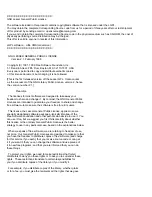
43
Table 8
lists the default values for the extension numbers.
Before deploying the system at the customer site, use the Cisco Configuration Assistant to create and
save the initial configuration by accepting the default values. To stage a single-site key system
configuration, change the Voice System Type setting from PBX (default) to Key System Configuration.
After deploying the system, use the Configuration Assistant to personalize the initial software
configuration, as required:
•
Change the default username and password for all devices.
•
Change the default hostname for each device.
•
Set the system time zone and time display for the UC 520.
•
Designate the system message which appears on Cisco Unified IP phone screens. For example,
change the system message to the customer business name.
•
Set the number of digits for each Cisco phone extension.
•
Configure Cisco phone features and intercom.
•
Configure extensions or build a comma-separated values (.csv) file with names and extension
numbers to import into the Configuration Assistant.
•
Configure network settings for voice.
For more information about Configuration Assistant, see the online help.
Table 8
Extension Numbers in Default Configuration
Description
Default Value in Software Configuration
Length of directory numbers
3
Pool of extension numbers to be created for
analog ports (FXS)
301 to 304
First number in pool of extension numbers to be
created. Starting with this directory number,
remaining numbers are automatically configured
in a contiguous manner.
201










































